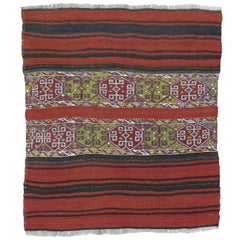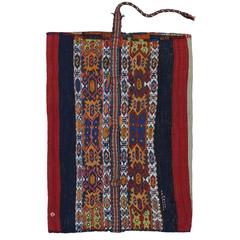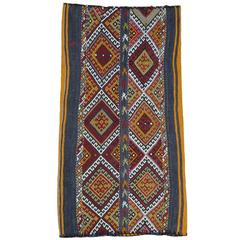Anatolian Grain Sack
Mid-20th Century Turkish Kilim Turkish Rugs
Wool
Recent Sales
Mid-20th Century Turkish Kilim Turkish Rugs
Mid-20th Century Turkish Kilim Turkish Rugs
Wool
Mid-20th Century Turkish Kilim Turkish Rugs
Wool
Mid-20th Century Turkish Kilim Turkish Rugs
Wool
Mid-20th Century Turkish Kilim Turkish Rugs
Wool
Mid-20th Century Turkish Kilim Turkish Rugs
Cotton, Wool
Early 20th Century Turkish Kilim Turkish Rugs
Wool
Mid-20th Century Turkish Kilim Turkish Rugs
Wool
Mid-20th Century Turkish Kilim Turkish Rugs
Wool
Early 20th Century Turkish Kilim Turkish Rugs
Wool
Mid-20th Century Turkish Kilim Turkish Rugs
Wool
Mid-20th Century Turkish Kilim Turkish Rugs
Wool
Mid-20th Century Turkish Kilim Turkish Rugs
Wool
Mid-20th Century Turkish Kilim Turkish Rugs
Wool
People Also Browsed
Vintage 1950s Italian Mid-Century Modern Armchairs
Brass
21st Century and Contemporary Italian Modern Table Lamps
Brass, Iron
21st Century and Contemporary Italian Modern Table Lamps
Chrome
Vintage 1960s French Mid-Century Modern Wall Lights and Sconces
Metal, Brass
Vintage 1930s Danish Mid-Century Modern Lounge Chairs
Wool, Birch
Antique 19th Century French Neoclassical Console Tables
Wood
Late 20th Century French French Provincial Console Tables
Wood, Paint
Vintage 1950s French Mid-Century Modern Coffee and Cocktail Tables
Ceramic, Oak
Mid-20th Century French Coffee and Cocktail Tables
Iron
Late 20th Century Turkish Kilim Turkish Rugs
Wool
Mid-20th Century American Mid-Century Modern Paintings
Acrylic, Paper
2010s American Modern Stools
Stainless Steel
Vintage 1950s Turkish Turkish Rugs
Wool
Antique 1870s Asian Caucasian Rugs
Wool
Late 20th Century American Mid-Century Modern Paintings
Acrylic, Paper
Vintage 1950s Turkish Kilim Turkish Rugs
Wool
Anatolian Grain Sack For Sale on 1stDibs
How Much is an Anatolian Grain Sack?
A Close Look at Kilim Furniture
Known for their wealth of rich colors and unique weaving tradition, antique and vintage kilim rugs are one of the most distinguishable types of rugs. The term “kilim” is Turkish in origin, but many variations of this type of textile share a common heritage and are practiced all across the Balkans, throughout the Arab world and elsewhere. There are Persian kilim rugs, kilim rugs from Central Asia and more.
It is difficult to definitively pin down the origins of kilim weaving, which is known as a “flatweave” or “slit-weave,” but historians believe that skilled artisans may have practiced versions of it as early as the eighth and ninth centuries A.D. in the Anatolia region of Turkey. Many of the Turkish iterations of these flat-woven rugs are recognizable for their arrangements of dazzling, flowing forms, but a range of motifs can appear in kilim rugs — abstract figures that reference rams’ horns, snakes or running water or motifs that are intended to symbolize concepts such as the tree of life or fertility. In Anatolia, women have used kilims to share narratives about their lives.
The difference between a kilim rug and most other kinds of carpets or pile rugs is in the aforementioned weave. They are made by interweaving variously colored, individual strands of wool (pure soft cotton, silk and goat’s hair are also used with the wool, albeit rarely) versus, say, the Tabriz rugs of Iran, which are hand-knotted rugs. This results in a smooth, frequently reversible surface. It’s a slit-weave because of the gap left between two blocks of color. Kilims are created on a loom, a typically uncomplicated structure mostly made of wood. Owing to the creative freedom that a slit-weave can afford its weaver, they tend to feature a range of bright, contrasting hues like reds, oranges and pinks that appear in bold combinations with deep blues and greens that are brought to life with natural dyes.
Handwoven kilim rugs are less expensive to produce and more durable than other rugs. They were traditionally used as floor coverings in mosques and yurts, as prayer rugs and saddle coverings. And these textiles are pileless: Whereas the Beni Ourain rugs of Morocco can be described as dense with a thick surface or pile, an authentic kilim rug is thin and flat. Because the resulting weave is lightweight, kilim rugs are well adapted for use in the hot summer months, and they are happily embraced by tribal weavers of Morocco, a part of the world that is home to many styles of rugs.
With their striking geometric patterns and provocative color pairings, kilim rugs and wall tapestries are loved by design enthusiasts and can bring charm and interest into any dining room, living room or other interior space.
Find kilim rugs and textiles and other vintage rugs on 1stDibs.
Finding the Right Folk-art for You
Folk art refers to a genre of art that shares the creator’s traditions, offering not just an artistic display but an opportunity to learn about a culture. Vintage, new and antique folk art typically reflects a heritage or location. It can include utilitarian objects and handmade art as diverse as weather vanes, portraiture and paintings, carnival art, quilts and duck decoys.
American folk art is frequently valued because of the traditional skills involved, like weaving, hand-carving wood and even stonework. Many folk artists are self-taught, while some train as apprentices within their community. By using available materials and taking a personal approach to their creations, artists ensure each piece is unique and conveys a story. Native American folk art includes functional objects reflecting their heritage, such as baskets, textiles and wooden pieces.
During the Great Depression, artistic materials in America were hard to come by, so artisans used discarded wood from cigar boxes and shipping crates to make highly stylized, notched pieces — most often picture frames and boxes — that are today sought after by collectors. This folk art style is called tramp art and was popular from roughly 1870 until the 1940s.
Folk art brings vibrant culture and traditions into your home. Browse an extensive collection of folk art on 1stDibs.


